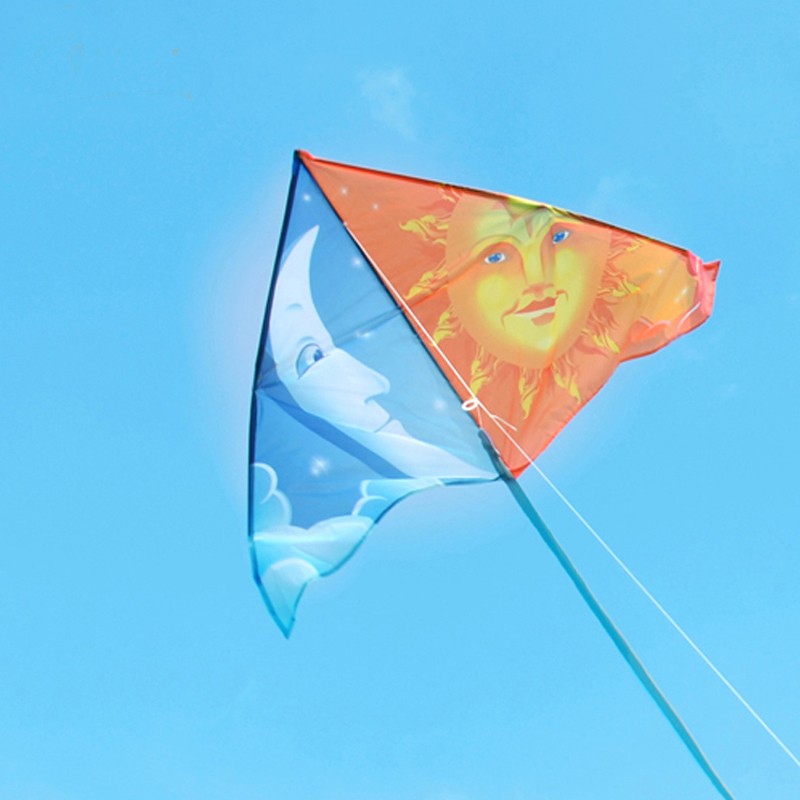"Suryah pratyaksha devata" (The Sun is the visible God)
Uttarayana is the time Period of the Sun movement in the northern hemisphere from the zodiac of Capricorn to Cancer. The Indian calendar puts this date as fixed on the 14th January(Makar Sankranti) and the end on 16th July(Karka Sankrati), the movement into Cancer is called the Dakshinayana period.
Uttarayana consists of the seasons of early spring, spring and summer when the Sun comes into prominence. Dakshinayana consists of monsoon, autumn and winter when the Moon is of more prominence. The Sun and Moon are both great influences on the life forms of our planet. The Uttarayana period is of the nature of the Sun(yang), where the spiritual aspect and the self(soul) are in play; while Dakshinayana is of the nature of the Moon(yin) when the physical body aspect and the mind come into play. Humans have been blessed with the discriminating awareness of the influence of the movement of the planets and stars and can use this knowledge accordingly to create a healthy, holistic and consciously intuitive lifestyle.
14th January is considered a highly auspicious Vedic calendar date, especially for those who are on the yogic path and seeking enlightenment. The Sun is representative of the cosmic consciousness that is the source of all energy. It is this date onwards through that most seekers found enlightenment- Buddha was enlightened during the Uttarayana period. The thought goes further: enlightened souls seeking liberation from the cycle of birth and death also choose this period to leave the physical body, a classic example when Uttarayana was the day chosen by Bhishma (the great/ mighty warrior who had been given a boon to be able choose his death) of the Mahabharata, the great epic that the Bhagvad Gita is revealed in.
In esoteric parlance, in mystic terminology, the sun is regarded as the presiding deity over the self of man, while the moon is the presiding deity over the mind of man. The self or the soul is different from the mind; the Atman and the Manas are differentiated by their metaphysical and psychological characteristics, respectively. The self of man is presided over by the Sun or Surya. The Sun is designated as Atma-Karaka. "Surya Atma Jagatas Tasthushascha" says the Veda. The Rig-Veda proclaims the spiritual presiding principle in the Sun as the invigorator, energiser of the selves of all created beings. That is the meaning of the Vedic prayer mentioned above. So there is not merely an astronomical or physical significance to our lives in the movement of the Sun towards the north, but there is also a biological, vital and psychological as well as spiritual meaning in this northern sojourn of the Sun. Devotees and seekers of Yoga have, therefore, to bring to their minds this internal world, and its significance which is beyond and farther than the physical world. The inner world is deeper than the outer.
Swami Krishnananda- The Divine Life society(Sivananda Ashram)
The Sun is at its most venerable on Makar Sankranti and the Sun God is worshipped with much devotion. Suryanamaskar Sadhana is undertaken by spiritual aspirants, and for the not so spiritual, kite flying becomes an epic festival and excuse to bask in the energising rays of the Sun. One of the names given to the Sun is Patang=Kite. This festival moves from the lethargy of winter to sprightly spring.
Most states in India will have the seasonal celebratory feasting foods for this harvest time: Gujarat, in the west of India, will offer undhiyu(mixture of fresh green beans and seasonal root vegetables cooked in spices and fresh green herbs; khichadi: with a mix of the fresh harvested grains(wheat, Jowar/sorghum, rice, barley, millet) and varieties of lentils mixed and cooked together on a slow flame. This will even extend to a sweet variation of the recipe with nuts and dry fruits to enrich. The annual kite flying festival is celebrated with great fervour in Gujarat. Punjab in the north, has a bonfire with popcorn and sesame and peanut pralines for Lohri(13th January); in the south of India, Tamil Nadu celebrates Pongal with rice sweetened in jaggery and coconut. Sesame and jaggery take center stage for this festival. Maharashtra offers Til-gud(sesame- jaggery/raw sugar) laddoo. Assam in the east celebrates Maagh Bihu. Overall, India celebrates the movement of the Sun into Capricorn as a harvest festival.



